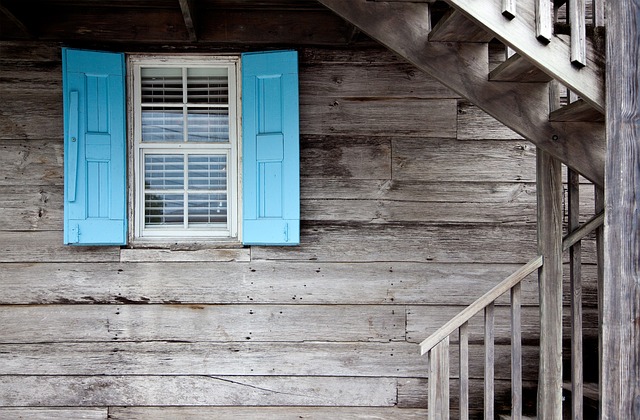To ensure home safety against storms, a comprehensive approach is essential. This includes assessing your location's weather patterns, reinforcing your home with impact-resistant windows and doors, securing the roof with hurricane straps, and elevating utilities to prevent flooding. Regular maintenance of both the home and landscape, including clearing gutters and vegetation, is critical for minimizing storm damage. Emergency preparedness involves having a well-stocked disaster kit, a clear evacuation plan, and an emergency kit with supplies for at least three days. Understanding local weather alerts, heeding evacuation orders, and staying updated on storm progression are vital. Homeowners should also consider specialized insurance policies that cover various storm damages and be aware of government assistance programs available in the event of federally declared emergencies. This proactive approach, combining physical reinforcements with emergency planning and financial protection, will enhance resilience against storms and safeguard both property and family.
Protecting your home from the unpredictable fury of nature is a critical aspect of maintaining safety and stability. This comprehensive guide delves into expert strategies for fortifying your shelter against high winds, flooding, and other storm-related perils. We’ll explore identifying vulnerabilities, reinforcing your home structure, preparing essential emergency supplies, and designing your landscape for enhanced resilience. Additionally, understanding the role of insurance and available government assistance programs is key to a comprehensive approach to safeguarding your property against the ravages of natural disasters.
- Understanding the Threat: Identifying Your Home's Vulnerability to Storm Damage
- Fortifying Your Shelter: Strategies for Reinforcing Home Structure Against High Winds and Flooding
- Preparing for the Unexpected: Essential Emergency Supplies and Evacuation Plans for Home Safety During Storms
- Landscape Design for Storm Resilience: How to Protect Your Property with Smart Outdoor Planning
- The Role of Insurance and Government Assistance in Safeguarding Your Home Against Natural Disasters
Understanding the Threat: Identifying Your Home's Vulnerability to Storm Damage

When it comes to safeguarding your home from the ravages of natural storms, a clear understanding of your property’s vulnerability is paramount. Homeowners should first assess their geographical location and historical weather patterns to identify potential risks. For instance, homes near coastal areas are more prone to hurricanes, while those in mid-latitude regions may face tornadoes or intense windstorms. A thorough evaluation of your home’s structural integrity, including the robustness of its roof, walls, and foundation, is essential for storm home safety. Retrofitting measures such as reinforcing the roof structure, securing windows with impact-resistant shutters or laminated glass, and ensuring proper drainage systems are in place can significantly reduce damage from high winds and heavy rains. Regular maintenance and inspections by professionals can also help prevent storm damage by addressing potential issues before they become critical.
In addition to understanding the type of storms your area is susceptible to, it’s crucial to develop a comprehensive emergency plan. This plan should include evacuation routes, critical contacts, and an inventory of personal possessions for insurance purposes. Staying informed through local weather alerts and having a well-thought-out response strategy can be the difference between a manageable situation and catastrophic loss. Moreover, ensuring that your home’s electrical systems are up to code and that trees and shrubs around your property are well-trimmed and healthy can further mitigate storm risks. These proactive measures underscore the importance of preparedness in protecting your home against the destructive power of storms.
Fortifying Your Shelter: Strategies for Reinforcing Home Structure Against High Winds and Flooding

In regions prone to high winds and flooding, fortifying your shelter against the fury of storms is paramount for home safety. Homeowners should assess their property’s vulnerability to wind and water damage by examining the structural integrity of the roof, walls, and foundation. Reinforcement strategies include installing impact-resistant windows and doors, which can withstand flying debris during severe weather events. Additionally, securing the roof structure with hurricane straps or clips is essential to prevent it from being lifted off by high winds. To safeguard against flooding, consider elevating utilities above flood level, waterproofing basements, and installing sump pumps alongside backup power for these systems to ensure they operate even when the power grid is down.
Ensuring your home’s resilience to storms involves more than just reinforcement; it also requires meticulous planning and preparation. Home safety measures, such as clear emergency plans and well-stocked disaster kits, should be in place before a storm approaches. Regular maintenance of trees and landscaping can reduce the risk of trees falling on your home during high winds. Furthermore, staying informed about local weather patterns and heeding evacuation orders when necessary are critical steps in protecting your home and family from the ravages of storms.
Preparing for the Unexpected: Essential Emergency Supplies and Evacuation Plans for Home Safety During Storms

When bracing your home for the unpredictable fury of storms, having a well-stocked emergency kit is non-negotiable for ensuring home safety. This kit should contain essential supplies such as a three-day supply of water (one gallon per person per day), non-perishable food, a battery-powered radio, a flashlight with extra batteries, first aid equipment, medications, and important documents like insurance policies and identification. Additionally, ensure that your emergency supplies include multi-purpose tools and sanitation items, such as toilet paper, moist towelettes, and garbage bags. These items are crucial for maintaining hygiene and comfort during power outages or when evacuation isn’t possible.
In the event of an impending storm, having a clear and practiced evacuation plan is critical for home safety. This plan should outline the routes to be taken, alternative shelters, and a communication strategy for contacting family members. If evacuation is ordered, know the difference between evacuate-in-place and evacuate-out-of-area; understand which one applies to your situation based on local government advisories. Ensure that all vehicles are fueled and ready to go, as gas stations may be closed or overwhelmed by those also fleeing the storm. Remember to follow any guidance from local authorities, who will provide updates on storm conditions and necessary evacuation routes to ensure the safety of you and your loved ones.
Landscape Design for Storm Resilience: How to Protect Your Property with Smart Outdoor Planning

Incorporating storm-resilient landscape design is a proactive measure that can significantly enhance the safety and security of your home against natural disasters. Strategic placement of trees, shrubs, and other vegetation can reduce soil erosion and mitigate the impact of heavy rainfall. By positioning these plantings to intercept water flow, you can redirect runoff away from your property’s foundation, thus preventing flooding and foundation damage. Additionally, well-designed landscaping can serve as a natural windbreak, lessening the force of high winds during storms and reducing the potential for debris to cause structural damage. Homeowners should consider the orientation and density of plantings to maximize their protective benefits while maintaining proper drainage and airflow around the home.
Furthermore, selecting native plants acclimated to local climate conditions can bolster your landscape’s resilience. These plants are often more hardy and require less maintenance than non-native species, which can be a boon during post-storm recovery periods. Investing in permeable paving for driveways and walkways can also facilitate water absorption rather than runoff, further protecting against flooding. Regular maintenance of your outdoor spaces, including pruning trees and clearing gutters, ensures that your property is prepared to withstand the forces of a storm, contributing to overall home safety. Integrating these elements into your landscape design not only enhances the aesthetic appeal but also fortifies your home’s defenses against nature’s unpredictable fury.
The Role of Insurance and Government Assistance in Safeguarding Your Home Against Natural Disasters

When it comes to safeguarding your home against the unpredictable nature of natural disasters such as storms, a robust insurance policy is a critical component of your protective strategy. Insurance plans specifically designed for catastrophic events can provide the financial security needed to repair or rebuild after a storm’s devastation. These policies often cover a wide range of potential damage from wind, hail, and floods, ensuring that homeowners are not left financially vulnerable in the wake of such events. Additionally, government assistance programs can offer further support, particularly for those affected by disasters declared as federal emergencies. These programs can provide grants and low-interest loans to aid in the recovery process, supplementing the coverage provided by insurance policies to offer comprehensive protection for your home against the ravages of storms.
Understanding the intricacies of both private insurance options and the various government assistance programs is key to effectively mitigating financial risk associated with natural disasters. Homeowners should engage with insurance providers to tailor a policy that aligns with their specific risks, considering the frequency and intensity of storms in their area. It’s also advisable to stay informed about government aid eligibility and the application process for such assistance, ensuring that you are prepared to act swiftly in the event that your home is impacted by a storm. By combining insurance with government support, homeowners can significantly enhance their ability to respond to and recover from the impacts of natural disasters, safeguarding not just their homes but also their long-term financial stability.
In light of the increasing prevalence and severity of natural disasters, it is imperative for homeowners to take proactive measures in ensuring their residences withstand potential storm damage. This article has outlined a comprehensive approach to fortifying your shelter, understanding your home’s vulnerability, preparing for emergencies, and incorporating resilient landscape design. By implementing the strategies discussed, from reinforcing your home structure against high winds and flooding to having essential supplies and evacuation plans ready, you can significantly enhance home safety during storms. Additionally, recognizing the crucial support that insurance and government assistance programs provide in safeguarding your home is key. Taking these steps not only prepares you for the unpredictable power of nature but also offers peace of mind as you navigate the challenges posed by storms.
